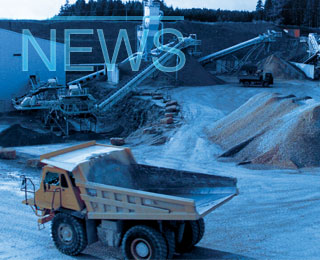Cement consumption in India doubled between 2005 and 2015, but still lags behind China’s at a comparable stage of development. In 2001, the World Bank calculations put China’s GDP per capita at US$1212 in inflation-adjusted terms. Using the same methodology, India’s current GDP per capita is slightly higher than China’s was then: in 2014, India’s GDP per capita reached US$1234.
Do these figures suggest that India is a decade or so away from exercising the same sort of economic muscle that China currently enjoys? Not if cement consumption is anything to go by. In 2001, China’s domestic cement consumption was 620Mt, while in 2015 India’s was less than half of that, at 274Mt. Looking at consumption per capita, in 2001 China consumed 485kg per person: in 2015, each Indian consumes an average of 209kg.
While the GDP per capita figures above suggest that India’s economy will not grow at the rapid pace that China’s did in the early part of the century, grow it will, and cement consumption will rise with it. Since 2000, consumption has grown at an annualised rate of 7.5 per cent a year, although this has slowed to 4.4 per cent for the period 2010-15. This slowdown, combined with sharp increases in production capacity – currently just under 400Mta – have exerted a downward pressure on prices. There are signs that this trend is beginning to reverse. The World Bank estimates that the Indian economy will grow at an annualised rate of 7.6 per cent per year until 2021, consistent with market-leader UltraTech’s forecasts that cement demand in 2016/17 will rise by seven to eight per cent.
Despite low prices, the industry in India remains bullish. Ten firms entered the bidding for Lafarge India’s 11Mta of capacity that the firm has been obliged to sell as part of the conditions for its merger with Holcim. An earlier deal fell foul of Indian law, which prevented mining rights being transferred to the purchaser. Similar problems affected the US$2.4bn purchase of Jaiprakash Associates assets by UltraTech. In response, the government amended mining legislation, smoothing the way for further consolidation in the future.
Even as demand grows and bigger players pursue economies of scale, challenges remain for Indian producers. Energy costs have fallen of late due to declining international oil prices, but these have risen steadily since the beginning of 2016 and in the longer term competition for India’s limited coal reserves will only grow fiercer as the economy continues to expand. Transport costs – which account for over a quarter of firms’ day-to-day spending – have grown at double-digit rates over the past decade and will probably continue to do so as shipment volumes increase.
If the problems posed by energy supply and logistics can be overcome, the cement industry in India is well set to benefit from rising demand. If India can continue to expand its economy in line with the World Bank’s projections, then consumption could rise to over 400Mt by 2021. Even then, by Chinese standards there would be plenty of room for growth.
Published under Cement News

